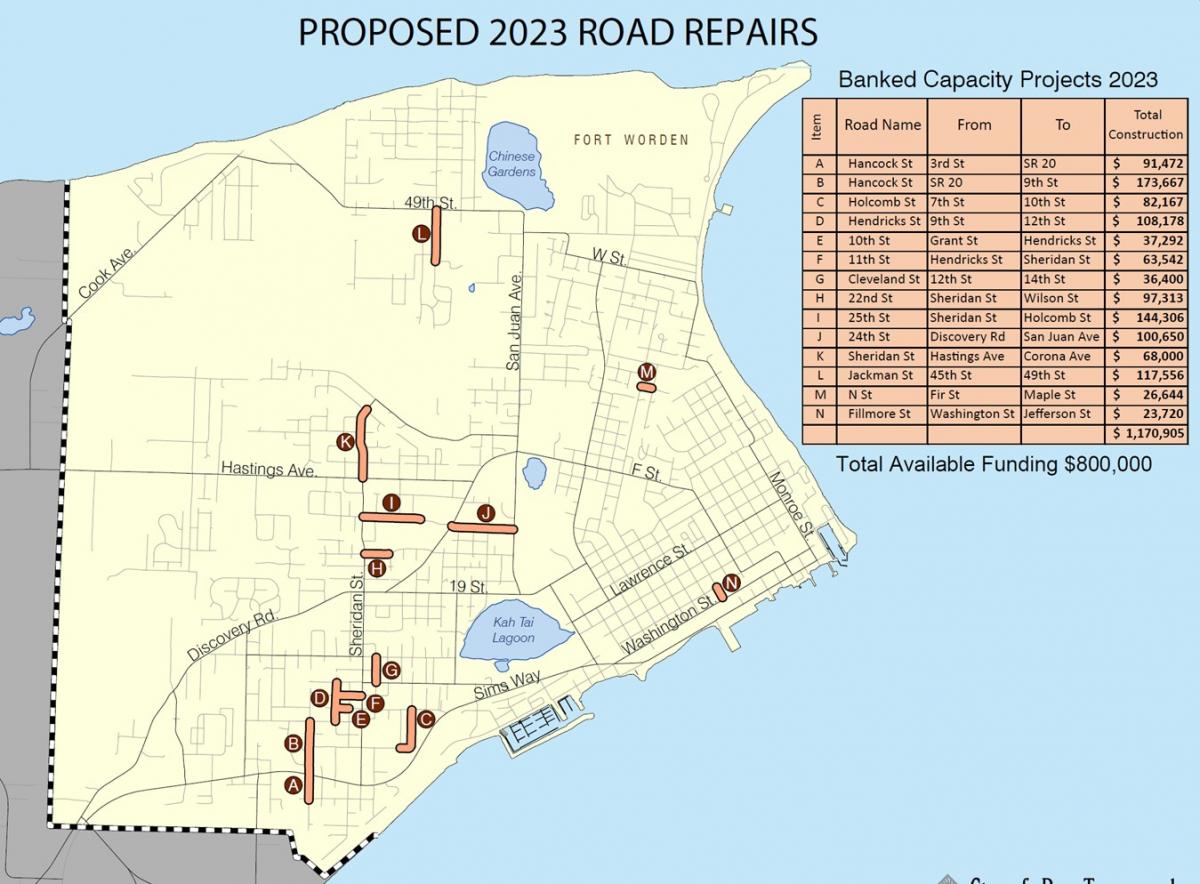Banked Capacity 2022
Investing in Our Trails, Parks and Streets
Our community deeply values its open space, trails, parks and streets. As a community, we are unusually rich in natural assets and beauty, but like many communities, we struggle to keep up with ongoing and deferred maintenance and the community's desire for improved access and amenities. Each year, through the budget process, we have a chance as a community to determine how to best use our limited funding. The City Council placed a priority on streets in 2022 and 2023 for use of banked capacity funds. We generally rely on functional plans– like the Transportation Improvement Plan or the PROS Plan – that received broad community input to base recommendations to City Council. Over the last two years, the City Council applied “banked capacity” to advance a set of high-priority projects worth $605,000 and $908,000 respectively, that invest in trails, parks and streets. The majority of this investment has been dedicated to streets due to their continued high rate of deterioration and predominant response from the public to invest in street repair.
How We Got Here – and What Banked Capacity Means
In February 2019, residents approved adding Port Townsend to East Jefferson Fire & Rescue (EJFR) fire district. EJFR now collects the dedicated Fire and EMS levies from City property taxpayers directly. In addition to the dedicated levies, the City was funding fire service through the general property tax levy. The City no longer makes payments from the general fund for fire protection. The City agreed to suspend the collection of an equivalent amount of property taxes it would have paid EJFR from the general levy – a reduction of the City levy or a “banked capacity” of about $908,000. An agreement with the fire district and a policy adopted by City Council spelled out an approach that allows increased levies of the banked capacity over the course of four years. For the first three years, funding is restricted to four main uses consistent with existing plans: local roads, parks and trails, the City’s housing trust fund and utility tax relief.
In 2020, the City decided not to levy any of the possible $303,000 banked capacity given the dire COVID situation and its related impacts. In 2021, the City levied $605,000 in banked capacity for use in streets, parks and trails. In 2022, the City levied $908,000 primarily dedicated to streets as illustrated in the map below. For future years, the Council will determine how to best invest $908,000 each year through the budget process.
Financial Sustainability
The City is experiencing steady increases in the cost of services while tax revenues are not keeping up. This divergence of increasing costs in excess of revenues will result in a steady erosion of services. This problem is compounded by the present need to address numerous deferred maintenance projects such as streets, city buildings, parks, and fleet in which no significant revenue is currently available. The banked capacity proposal is informed by the principles of financial sustainability so that we make progress without overextending ourselves and incurring additional costs. These principles also informed recent and near-term decisions, including the negotiation of a water use agreement with the Mill, a comprehensive streets program, a general sewer plan, and the future of parks and recreation. Beyond those projects, it will take many years to craft and adopt sustainable solutions. A Financial Sustainability Task Force was appointed last year and will begin its work in the fall. Stay tuned here to learn how to provide your input and to stay engaged.
2023 Proposed Road Repairs Map


